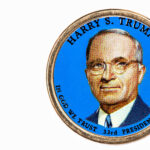The Cold War was a period of political and military tension between the Western powers, led by the United States, and the Eastern powers, led by the Soviet Union, that lasted from the end of World War II until the early 1990s. One of the key elements of the Cold War was the space race, which was a competition between the United States and the Soviet Union to demonstrate superiority in space exploration.
One of the first major events of the space race was the launch of the Soviet Union’s Sputnik 1 satellite in 1957. This shocked the United States and led to a renewed focus on space exploration. In response, the United States launched the Explorer 1 satellite on January 31, 1958. This was the first successful American satellite and it made a significant scientific discovery: the detection of the Van Allen radiation belt.
The discovery of the Van Allen radiation belt was important because it provided scientists with a better understanding of the Earth’s environment in space and how it is affected by solar activity.
The successful launch of Explorer 1 was a major achievement for the United States and it helped to restore American pride and confidence in the wake of the Sputnik 1 launch. It also marked the beginning of a new era of scientific exploration in space. The space race between the United States and the Soviet Union would continue for several more decades, but the Explorer 1 mission was a significant milestone that demonstrated American capabilities in space exploration.
References:




